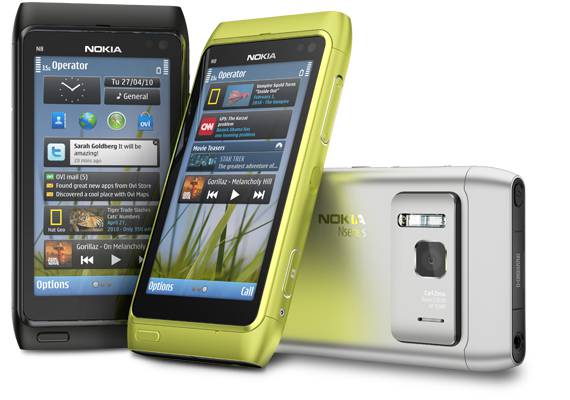Symbian have from day one faced problems in attracting developers. Ever since it’s inception almost a decade ago, the OS have continually lost out to other platforms in both app count and quality. Whether it may be Palm, Windows Mobile, iOS or more recently Android, the platform have been increasingly losing the app count battle. In an environment where many analysts believe a loaded appstore is a key to success, should Symbian and its key backer Nokia be worried? To have an idea of what our answer might be let’s travel back in time to the first few years of Symbian.

2001-2004
During the period of 2001-2004 Nokia and Symbian faced one main competitor: Palm. This comparison is somewhat lopsided when taken on a global note, Nokia’s total smartphone sales dwarfed Palm’s in everywhere except the US. The funny thing though is that even with this huge advantage in reach and influence Nokia still failed to attract as many developers as Palm. This turn of event will not be so surprising if one was to take note of the difference conditions each faced: Nokia’s influence in the US was not as big as Palm’s, which then went on to hurt it’s app numbers because most app developers are actually in the US. So even while selling just a few million devices yearly compared to the 20+ million being sold by Nokia, Palm still managed to gain double the amount of applications in half the time as Symbian. To make it worst Symbian c++ was difficult and expensive to learn when compared with Palm’s garnet and later Windows Mobile OS, in everyway Symbian just could not compete.
Windows Mobile: Competition Doubles
Windows Mobile’s arrival soon after Palm’s OS brought traditional smartphone contractors such as HTC, old rivals such as Samsung and new commers to the smartphone arena a common weapon to use against Nokia. Windows Mobile was a runaway success with developers, and to make it worst for Symbian, it strengthened at a time when Symbian was transitioning from OS8 to OS9 which were both incompatible app-wise. This transition for symbian came in 2004-2005 which ended up with Symbian starting with zero apps, at a time when both Windows Mobile and Palm OS had several thousand.
Symbian c++, the culprit?
Symbian c++ is known to be notoriously difficult to learn and program with, which is further compounded by the somewhat fragmented IDE and SDK systems that require expendature of hundreds of dollars to reach the stages where programming difficulty is reduced. Symbian c++’s layout does have an advantage; it is what enabled Symbian to be the most power and resource efficient OS out there. Symbian c++’s deficiencies became more apparent with the release of the iPhone SDK which enabled developers and not-so-developers to easily create and distribute apps, Symbian’s problems just got worst.
What have changed 2010 –
Qt is the saviour of Symbian’s app future, it is as simple as that. Qt should unify Symbian with Meego which will not only help developers but also help Nokia andSymbian garner more support. Nokia’s recent Ovistore stats suggest that the Ovistore, even with just an estimated 13000 apps, is the fastest growing appstore in terms of new users daily and also the second most profitable appstore there is, the days of Symbian being the app underdog seems to be numbered.
What are the expectations for Nokia, Symbian, Qt and Ovistore over the next year? It is expected that the Ovistore will continue to grow and improve, and while it might never reach Android’s or Apple’s numbers or levels of success, developers should note that it’s not about app count but it is about potential and profit, both of which will explode as Ovi catches on.
